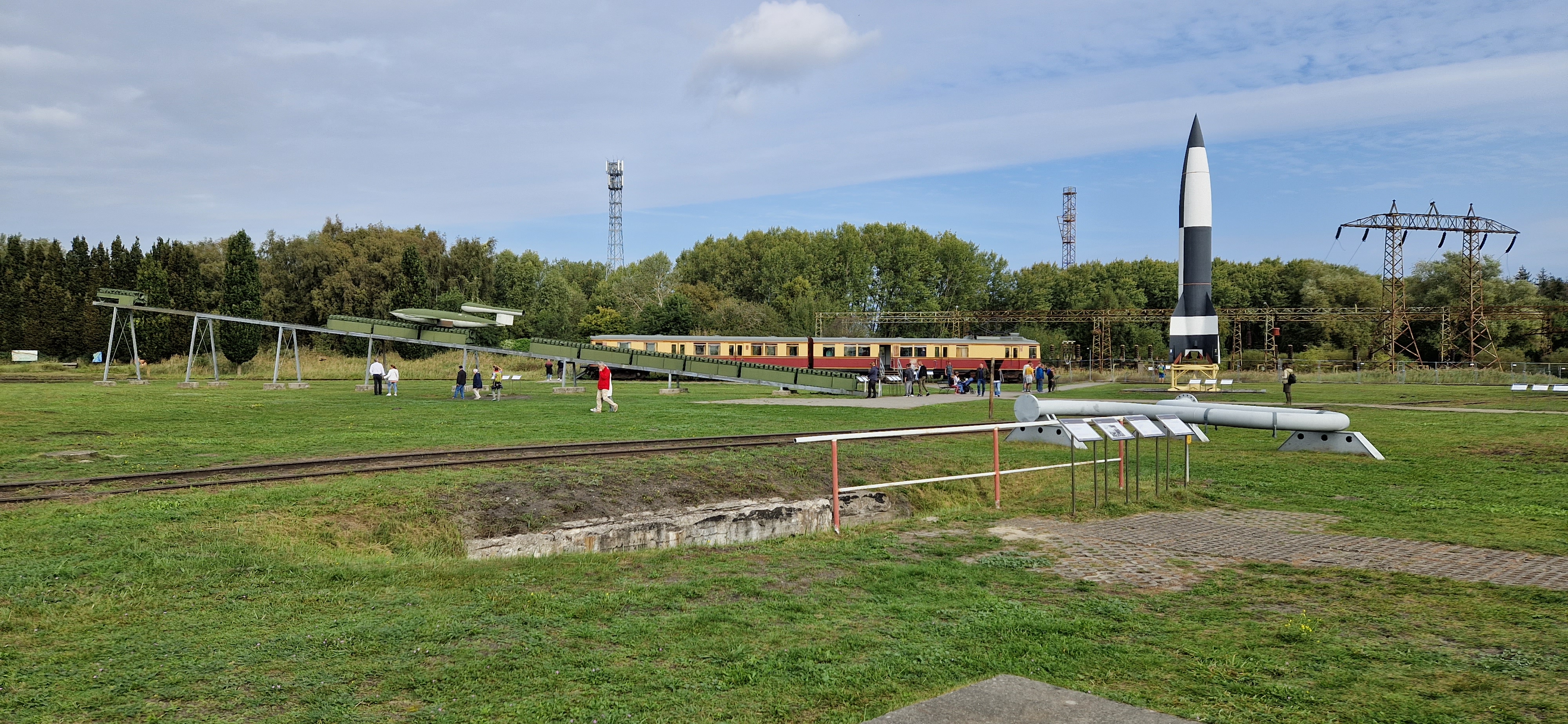
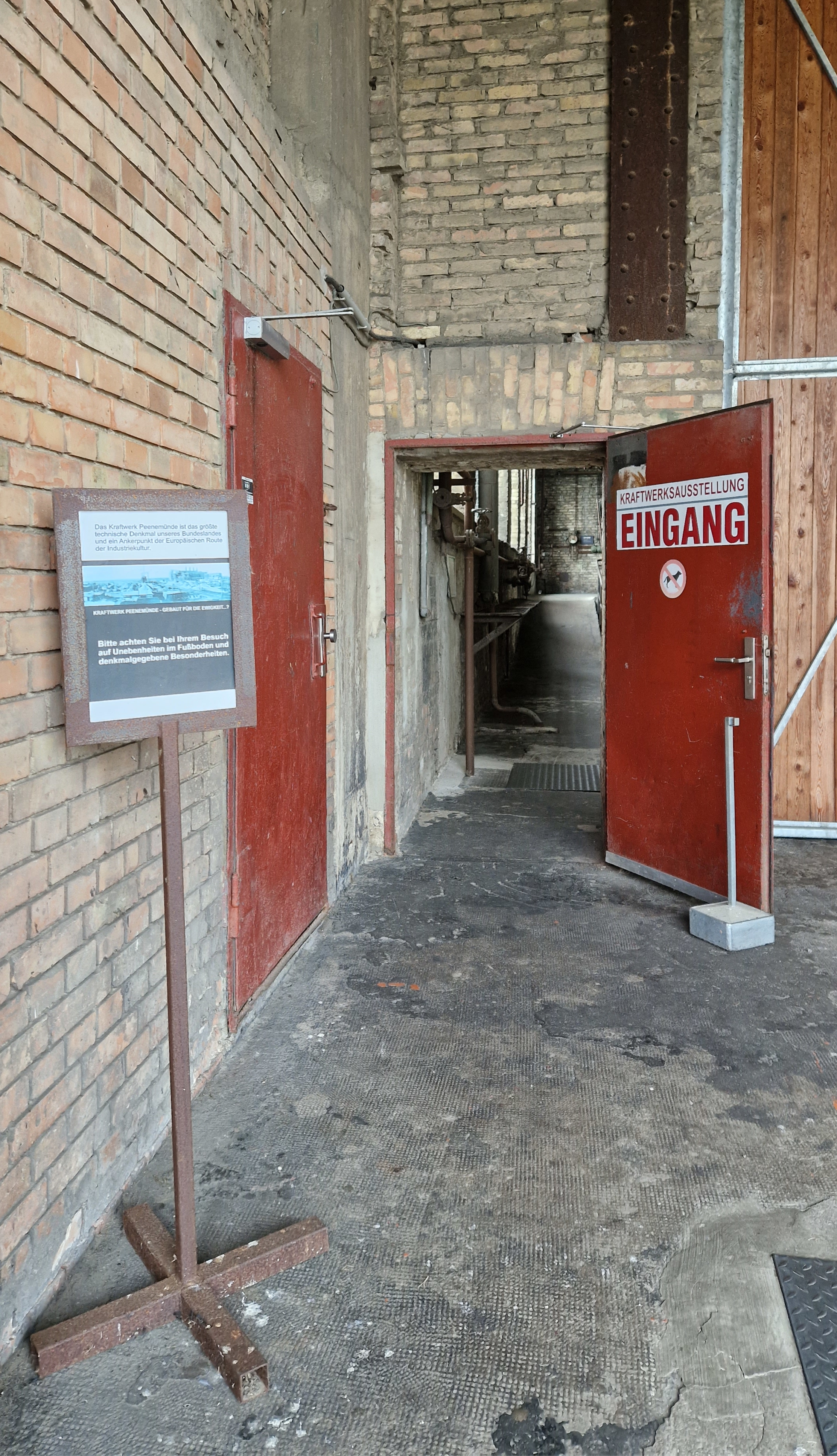
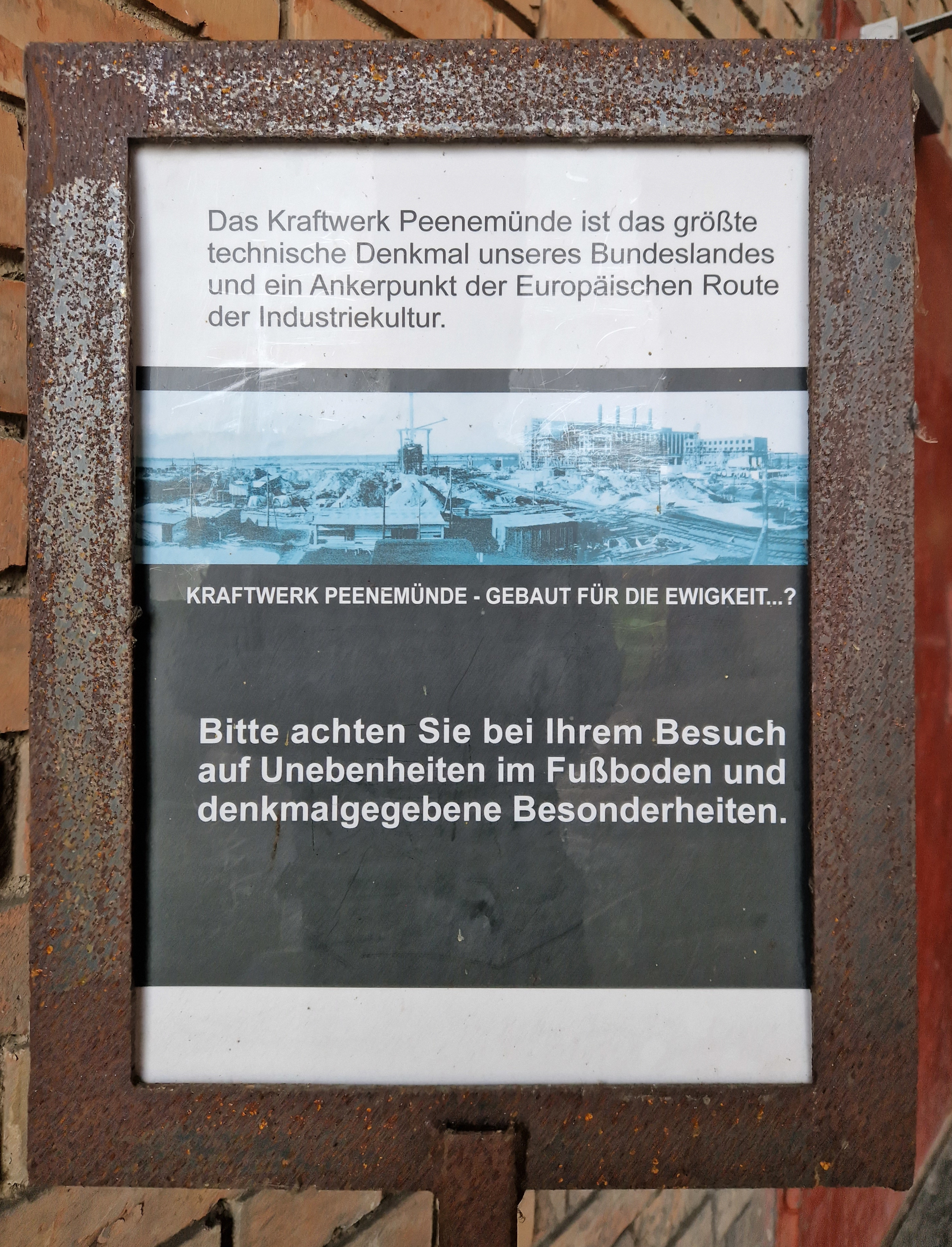
When I was here in 2018 I was struck by the power plant’s size — how could a visitor not be? The plant and the coal crane dominate the museum site, just as the ruins of the oxygen generator plant dominate the town. I had been so focused on the museum though, that the power plant was something in the way, or an adjunct to be taken a look at after the main event. The position of the plant in the state’s history and state’s current image, especially in the wake of the Nord Stream lines, wasn’t something I considered.
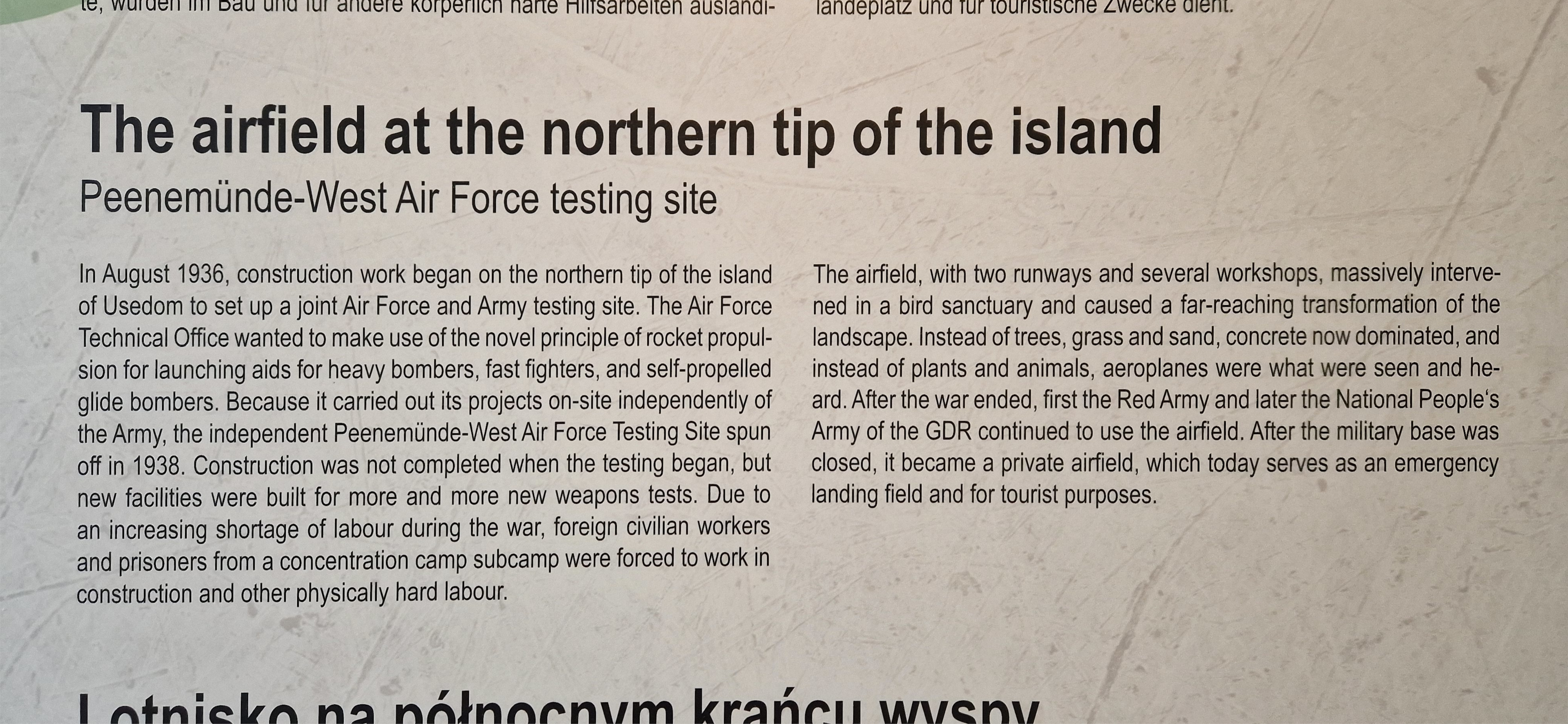
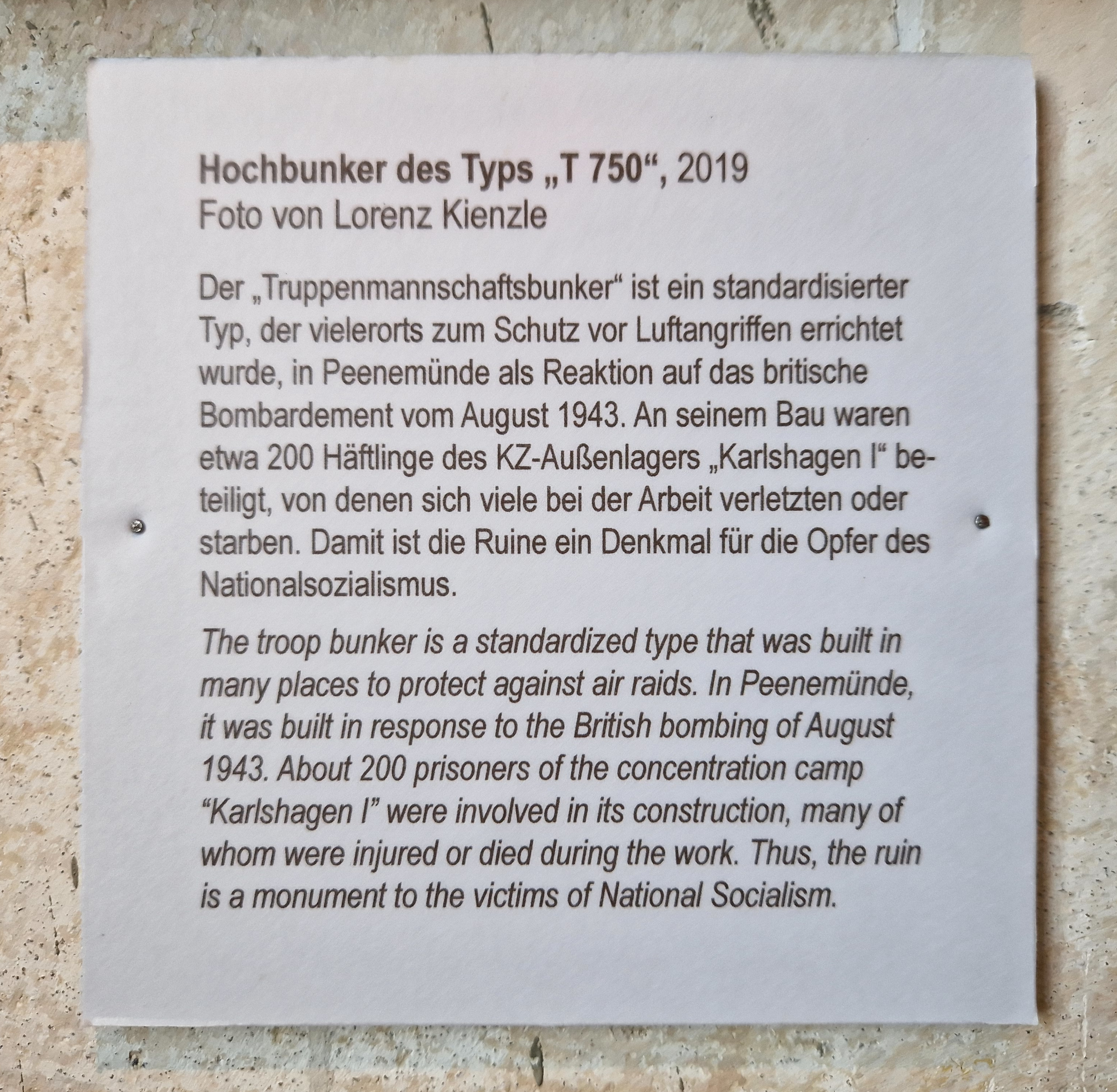
An exhibit of photographs contrasting the appearance of the site during the time of operation with what remains today is very visually appealing, but it’s the text of the commentary which really captured my attention. The theme is how humanity transformed the landscape. Construction and operation of a Nazi airfield „massively intervened in a bird sanctuary“. Again and again these texts ignore the specific nature of a rocket program built to bombard another country’s cities, instead presenting the installation as a human transformation of the environment. I had not seen this approach before.
The repeated use of phrases like „the ruin is a monument to the victims of National Socialism“ I’ve seen various aspects of many times. A ruin is a ruin. Any portrayal as a representation of victims, of oppressors, of anything at all is a value given by an observer, and different observers will interpret what they see differently. Historical texts generally, though, speak as the voice of academic social authority, telling the masses how they „should“ interpret artifacts. This framing allows only one interpretation possible. Unfortunate victims suffered and gave their lives in part so that we future generations might benefit. We mourn them. How tragic that these people were subject to the oppression of a malign force which appeared from nowhere to captivate and enslave the helpless. We must firmly resolve to never again allow Jews to be loaded onto railroad freightcars.
There’s an ownership of the dead and an attribution of meaning to their suffering and murders as it relates to us that I find arrogant. I picture myself in the place of a man dying in a tunnel at Nordhausen. I am dying because I was a civilian Pole caught on the street during a Nazi round-up. I am dying because I am Dutch and my own municipality’s police delivered me over to the occupier. I am dying because I am a German Jewish citizen of Köln who believed or pretended to myself to believe that I was being relocated to some eastern work camp at the direction of our – my – government. I am not dying „for the benefit“ of a future generation of museum-goers. I am dying because I mistakenly trusted, because I was betrayed by governmental authorities, because governments lied, because dissident citizens were unable to organize meaningful enough opposition. „Unable“? Again and again the narratives of contemporaries reinforce the extent to which those going to their deaths failed to organize, refused to organize, believing that if they trusted in the authorities, in anonymity if they just kept their individual head down, in social customs, in religious faith, in the goodness of man, all would be well.
There is an allied approach used to discuss the responsibility/guilt of the scientists and engineers who designed and built the facilities. Repeatedly we are told Peenemünde scientists didn’t simply stand by watching while tens of thousands died producing V-1 and V-2 weapons at places like Nordhausen, that in fact Peenemünde staff were very actively involved in supervising production. After the war the US „sanitized“ Nazi pasts of scientists recruited to US missile programs. Guilt is treated always as a question of individual responsibility, a question of individual shame. We exhibition visitors are ashamed at the weakness of these men, our ancestors with weak consciences. We resolve to never assist Nazis who ask us to lend our rocket scientist skills to implementation of their evil plans.